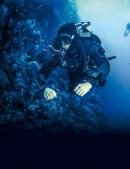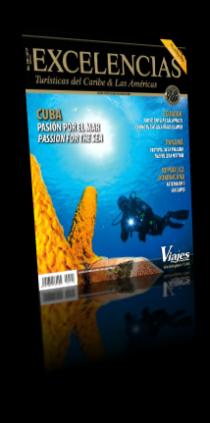- Cave Scuba Diving Just for Experts.
A CAVE DIVER JUMPS INTO A WORLD OF SILENCE AND DARKNESS THAT REACTS TO THE SLIGHTEST BEAM OF LIGHT TO SHOW ONE-AND-ONLY CREATURES THAT DWELL AROUND LIMESTONE SPANGLES
The island of boasts incredible sites for snorkeling and scuba diving, with possibilities to explore true underwater fantasies, from just three meters deep to unfathomable depths.
Water clarity highlights the colors of sponges, corals and marine life that share an ecosystem of dreams from the San Antonio Cape to Maisi Point. There are places like Jardines de la Reina and Jardines del Rey, which are sought after by hundreds of visitors and divers every year.
Playa Santa Lucia in Camagüey is a place where visitors can swim and feed bull sharks with the help of certified diving trainers. In Maria La Gorda in Pinar del Rio, much larger fish can be made, such as the picture-perfect groupers. On the Isle of Youth, starfish reach the shores of the Colony Hotel, where a world-class diving center stands.
But there is a diving modality that can be performed only by seasoned divers properly trained and certified to do it: cave scuba diving, which also requires specialized gear.
Cuba has lovely sites for this exquisite practice. The archipelago covers a total surface of 110,922 square kilometers of pure limestone, a condition that makes cave far more abundant than anywhere else in the world.
Such characteristics piqued the interest in doing research, a reason why Dr. Antonio Núñez Jiménez funded the Speleological Society of Cuba (SEC) back in 1940, an organization that since then has scoured and studied caves around the country in coordination with the Cuban Federation of Underwater Activities (FECAS), which holds an Underground Scuba Diving Commission.
An ideal site for cave divers is Bay of Pigs, with excellent coral reefs in open waters and breathtaking inner pools called cenotes, fitted out with guiding ropes that give divers a safe route to follow as they gaze at hidden wonders in a world of darkness. A few easy-to-reach places are the Lagoon of the Fish and El Brinco.
In the new province of Mayabeque, the eyes of the bolder dive get wide open in Juanelo Piedra, a cave filled with wonderful speleothems that cover the floor and ceiling as they give shelter to schools of blind fish whose only home is the flooded caves. The evolutionary process rendered their eyes as useless organs in a state of complete darkness. In today’s Cuba, there are three endemic species and subspecies of these fish, which can be made out in many caves across the island as precious wonders of our local nature.
It’s well known now that Matanzas province boasts the largest abundance of limestone terrains, more than anywhere else on the island. Saturn Cave, full of concealed spaces for cave scuba divers, is the most sought-after destination of all. Right at the entrance, a beautiful blue lagoon can be reached by means of a makeshift ladder.
In Camagüey in the late 1990s, SEC members went down the Rolando heights in Sierra Cubitas, taking an 82-meter-deep, free-fall vertical pool all the way to a water surface that lies in the depths. This dive has been the biggest challenge from a mountain-climbing perspective that involves a cave diving exploration in Cuba.
It is well proven that the country’s longest cave is Tanque Azul in Holguin, renowned for its length and the beauty of its secondary formations, featuring 2,600 meters of explored flooded galleries. The deepest is El Ojo del Mégano, a 70-meter-deep cavern of phreatic origin located beneath the seawaters and home to a group of hammerhead sharks.
For the enjoyment of all cave divers, Mexico and the Dominican Republic show off deep cenotes, where archaeological and paleontological remains preserved on the spot –very similar to those in Cuba– have been discovered.
Among the most spectacular sites to enjoy these formations, the Bahamas islands –especially in Andros– are famous for their blue holes that form an oceanic spit.



























































































































